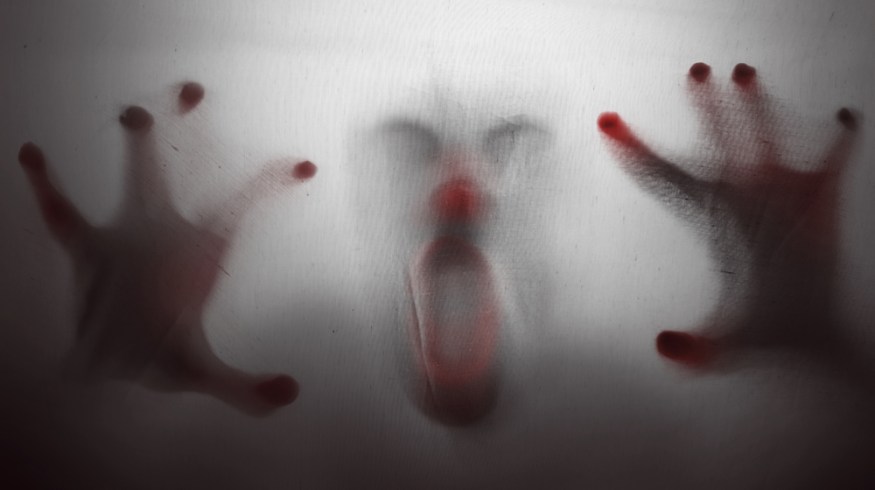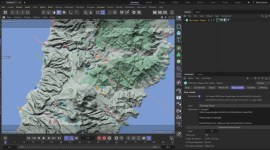
Up That Scare Factor: 8 Ways to Build Tension in a Scene
As if things weren’t already tense enough in today’s world, here are eight tips to help stress your audience out even further.
Of all the emotional states that I like a film to put me in, my favorite is definitely a state of tension. There are a variety of techniques a filmmaker can adopt to elicit this response.
Here are a few basic filmmaking techniques to get you started on building tension.
It’s All About the Background

One of the classic ways to build tension in a scene is to simply show the audience something moving in the background. With this technique, you can provide the viewers with information that the protagonist doesn’t have. It’s a quick way to ratchet up the tension, giving the audience a loss of control feeling. All they can do is watch helplessly as a character wanders into a dangerous situation.
I’m sure you’ve heard audible reactions from an audience when this happens. I’ve even been at the cinema and heard people scream at a character on screen to try and get their attention.
Ahh, I love movies.
Blur It out

While having things creep around in the background is scary, it’s even scarier when you can’t clearly see what’s doing the creeping. Hide something or someone in-frame by using a shallow depth of field.
Decreasing the depth of field will help blur out the foreground and background, allowing your monster to perfectly disguise itself from the viewers. Seriously dude, turn around.
Achieve a shallow DOF by lowering the aperture. It helps to have a high-quality, “fast” lens.
Use the Right Music

Sound is such a huge piece of the filmmaking puzzle, and oftentimes, the determining factor that makes a scene work . . . or not. And, it’s an especially powerful tool for building tension.
Use music to set the mood that something is off, or alert the audience to impending danger. Slowly ramp up a track to help increase the stress of a particular moment.
Or, if you’d prefer to keep your viewers in the dark, silence also works well. Use silence to take an audience by surprise, and help mask possible danger that’s just around the corner.
Dare I suggest, use it for a jump scare?
Add SFX

Proper sound design helps draw the audience into your world. It makes it more tactile. For example, just staring at a door isn’t that tense. Use sound to alert the audience that something is just behind the door. Some footsteps, a knock or bang at the door, creaking wood, a jiggling doorknob, or whatever else serves the scene.
To help communicate uneasiness, add a heartbeat, some heavy breathing, and maybe an eerie drone sound that’s slowly rising in volume.
Voilà, time to change your underwear.
Turn Around Slowly

The slow turn is ever-present in cinema. If you’ve seen any film from the Alien franchise, then you’ve seen a character do a slow turn. Naturally, a person would never do this in real life. Honestly, if you were being stalked by an acid-bleeding alien that wanted to eat you, how long would it take you to turn around? Thirty seconds? Probably not.
Nevertheless, this technique helps to not only eat up screen time, but also make the audience TENSE. It works especially well after a nice It’s All About the Background shot that I mentioned earlier.
Don’t Show the Monster

While Steven Speilberg didn’t plan on it, his use of not showing the shark made Jaws one of the scariest films of the century. The horror was implied through reaction shots and closeups of screaming people getting yanked underwater in an explosion of blood. There’s nothing more terrifying than being stalked by something that you can’t see until it’s got your leg in its mouth.
Not showing the monster leaves everything up to the imagination of the audience.
Subtle Camera Movement

A subtle camera move can help bring attention to a specific part of the frame. Use it to help guide the viewer to look where you want them to look.
In this particular shot, I want the viewer to imagine something looking through the crack of the door. So, a slow zoom over the course of twenty seconds should do the trick. With the right music, this shot will get your audience on the edge of their seats.
The Reaction Shot

The Don’t Show the Monster technique works only because of the power of the reaction shot. A reaction is oftentimes more suspenseful than actually showing what’s being reacted to. These shots make drama more dramatic and horror more horrifying.
This shot is a perfect example. I’m actually just reacting to a teddy bear. Chill.

I imagine you could go out and make a phenomenal horror film consisting almost entirely of reaction shots.
While these techniques work well on their own, the real power is when you combine them. So, what are you waiting for? Go out and build that tension.
A few more horror-inspiring articles for you:
- The Editor of “Us” on Working with Jordan Peele and the Horror Genre
- Lamb: Arthouse Horror and the Rise of a New Genre
- Video Tutorial: Create Retro Horror Movie Titles in After Effects
- The Best (and Most Insightful) Genre Films at Fantastic Fest 2021
- 7 Core Genre Elements Every Zombie Movie Needs
Cover image via FOTOKITA.





